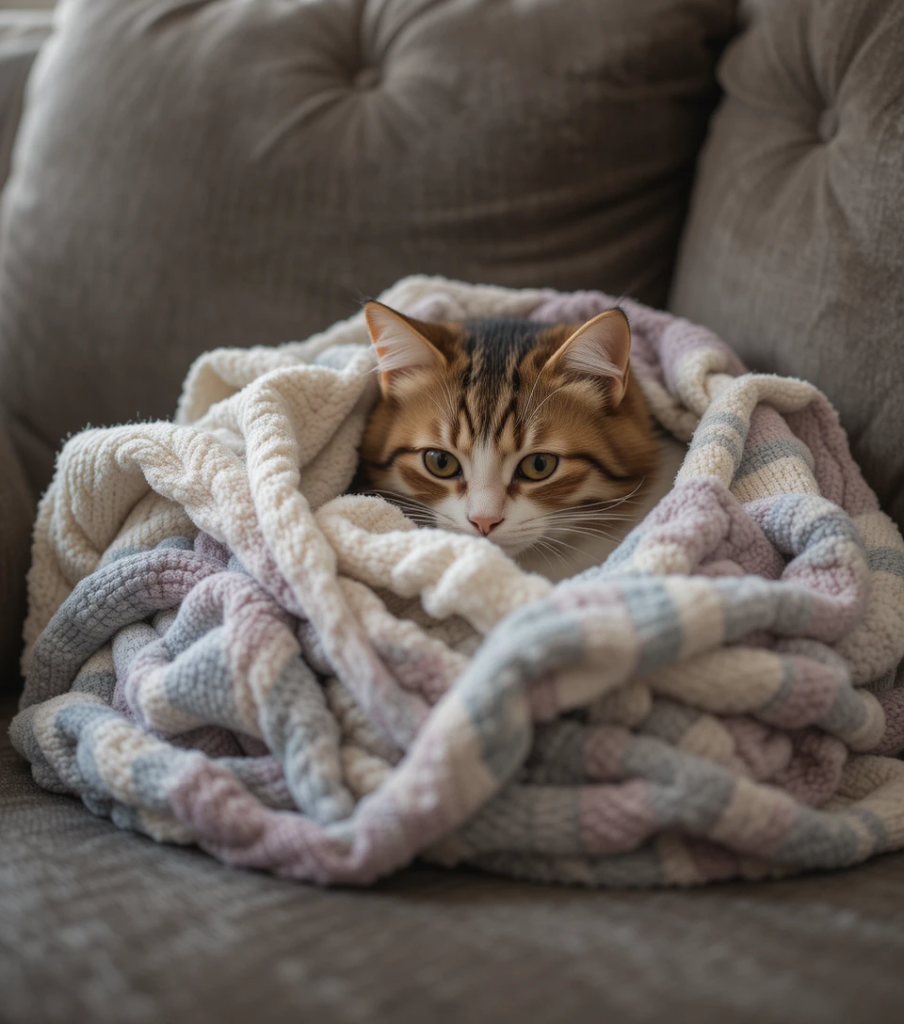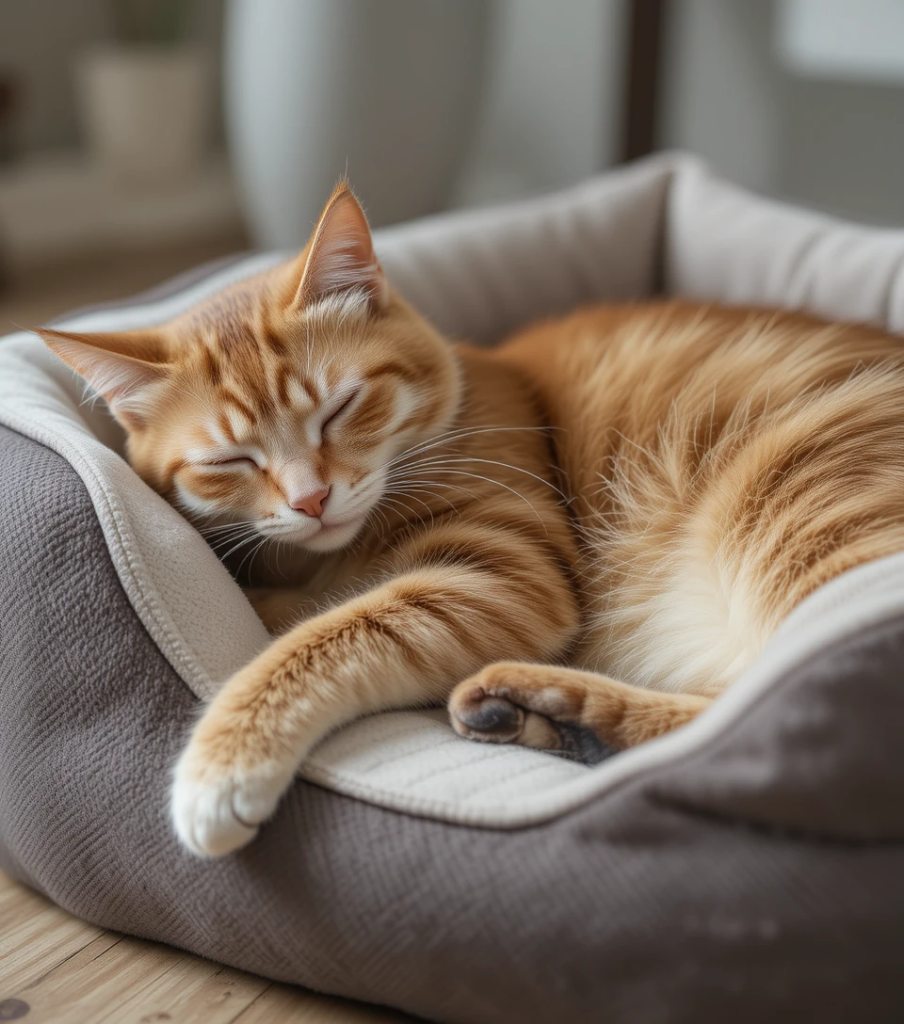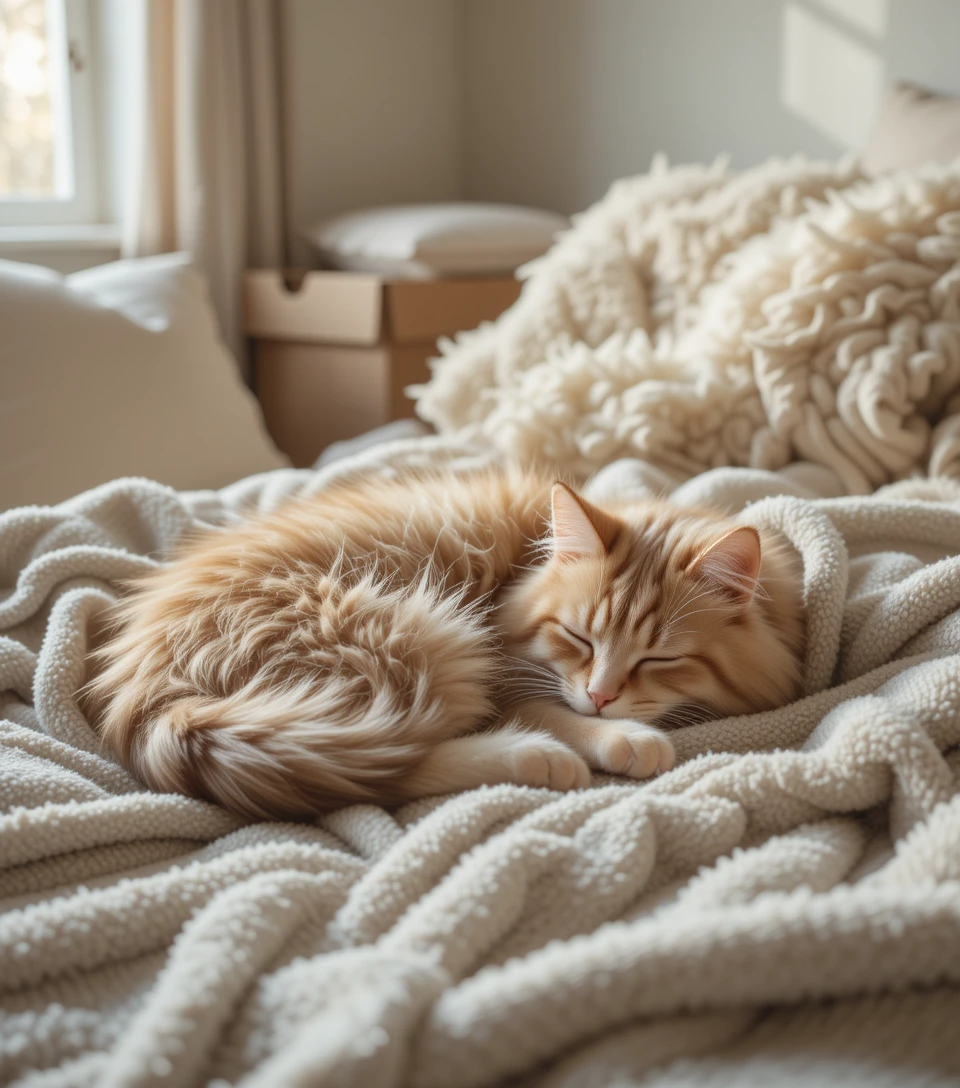Cats are champions of comfort. Whether they’re curled up on a sunny windowsill, buried in a pile of laundry, or nestled in your lap, they instinctively seek out cozy, warm, and soft places to snooze. But what material do cats like to sleep on the most — and why are they so particular about it?
In this article, we’ll uncover the cozy secrets behind feline sleep preferences and share vet-approved insights into the best (and worst) materials for your cat’s bedding. Whether you’re buying or DIY-ing, you’ll know exactly what to look for.
Understanding Your Cat’s Sleeping Instincts

Cats sleep an average of 12–16 hours a day — even more for kittens and seniors. But it’s not just about quantity; it’s also about quality. Their instinctive drive for warmth, softness, and safety comes from their wild ancestors, who needed secure, insulated resting spots to conserve energy and stay protected.
Domestic cats mirror this behavior, gravitating toward spots that provide both comfort and a sense of control over their environment.
Top Materials Cats Love to Sleep On
Let’s explore the top materials that cats commonly prefer — and why.
Fleece – The Ultimate Softness
Fleece is one of the most beloved materials for cat bedding. Its plush, warm texture is irresistible to most felines. Cats often knead fleece — a comforting behavior they carry from kittenhood.
Why it works:
- Soft and gentle on paws
- Excellent insulation for colder months
- Easy to wash and maintain
- Affordable and widely available
Cotton – Breathable and Safe
Cotton offers a natural, breathable option that’s perfect for warmer weather or sensitive cats. It doesn’t trap heat as much as fleece, making it ideal for temperature control.
Benefits:
- Hypoallergenic and non-irritating
- Lightweight and comfy
- Easy to clean
- Safe for daily use
Wool – Warm but Sometimes Irritating
Wool is naturally insulating and can attract cats who love to snuggle in warmth. However, it can be itchy or irritating to some cats, especially if it’s untreated or coarse.
Pros and cons:
- Great warmth in winter
- May cause allergies or discomfort
- Natural but requires careful washing
Faux Fur – Mimics Mom’s Warmth
Faux fur is designed to replicate the softness and warmth of a mother’s fur — a comforting memory for many cats. It’s particularly beneficial for kittens or anxious cats who need extra reassurance.
Why cats love it:
- Soft and luxurious texture
- Calming effect for stressed cats
- Often used in high-end cat beds
Memory Foam and Orthopedic Foam

Memory foam is ideal for older cats or those with joint pain. These supportive materials reduce pressure on the spine and hips, providing a deep and restful sleep.
Key features:
- Excellent for senior cats
- Retains warmth
- Reduces stiffness and discomfort
- Often comes in orthopedic beds
Materials to Avoid for Cat Beds
Not all materials are cat-friendly. Some fabrics can irritate the skin, trap too much heat, or contain unsafe chemicals.
Avoid:
- Rough or scratchy fabrics (like burlap or coarse wool)
- Noisy materials (like plastic or crinkly polyester)
- Heavily dyed or chemically treated fabrics
- Loose knits or open weaves that can snag claws
Other Cozy Cat Favorites
Sometimes, the best cat bed isn’t a bed at all. Cats love unconventional, cozy spaces that offer a combination of texture, warmth, and security.
Feline favorites include:
- Cardboard boxes – natural insulators with high sides
- Laundry baskets – smell like you and are often warm
- Blankets or comforters – thick and inviting
- Sunny spots – windowsills with sunlight are cat magnets
Should You Buy or DIY Your Cat’s Bedding?
Buying:
Pet stores offer a wide variety of fleece-lined, orthopedic, and heated cat beds. They’re convenient and often designed with safety in mind.
DIY Options:
- Use an old sweatshirt and pillow to make a snug bed.
- Sew a simple fleece blanket into a padded mat.
- Repurpose cardboard with a plush lining.
Both routes can be great — it depends on your budget and creativity!
Matching Materials to Your Cat’s Personality
Not every cat is the same. Some prefer firm surfaces, while others demand plush luxury. Consider these factors:
- Anxious cats may love faux fur or fleece for the sense of comfort.
- Hot-weather cats often prefer cotton or cool mats.
- Seniors benefit most from memory foam or orthopedic support.
- Kittens may enjoy a mix of softness and warmth for security.
Observe your cat’s habits — where they nap naturally gives great clues.
Tips to Encourage Better Cat Naps
- Place beds in quiet, draft-free locations.
- Clean bedding regularly to remove fur and allergens.
- Rotate materials to match seasons (fleece for winter, cotton for summer).
- Add familiar scents or toys for extra coziness.
Conclusion
So, what material do cats like to sleep on? The cozy secrets are out: fleece, cotton, faux fur, and memory foam top the list. The key is warmth, softness, and security — everything a cat needs to feel at home.
Whether you buy or DIY, matching your cat’s sleeping preferences to the right materials can transform naptime into pure bliss.
10 Frequently Asked Questions
1. What type of bedding do cats prefer?
Soft, warm, and secure bedding like fleece, faux fur, or memory foam.
2. Is fleece or cotton better for cat bedding?
Fleece is warmer and softer, while cotton is more breathable and great for warmer climates.
3. Do cats like sleeping on memory foam?
Yes, especially senior or arthritic cats who need joint support.
4. Why do cats knead soft materials like blankets?
It’s a comforting behavior from kittenhood that helps them relax.
5. Are heated beds safe for cats?
Yes, if they are pet-safe and have an automatic shutoff. Always monitor usage.
6. Can cats be allergic to wool?
Some cats may have skin sensitivities to coarse or untreated wool.
7. Should I avoid synthetic materials in cat beds?
Avoid overly synthetic or crinkly materials that can trap heat or cause discomfort.
8. What material holds cat hair the least?
Tightly woven cotton or microfiber fabrics tend to trap less fur than fleece.
9. Do cats prefer soft or firm surfaces?
Most prefer soft surfaces, but some enjoy a firmer feel — it depends on the individual.
10. How can I make a DIY cat bed with cozy materials?
Use fleece, cotton, or faux fur with old pillows or clothing for easy DIY comfort.

